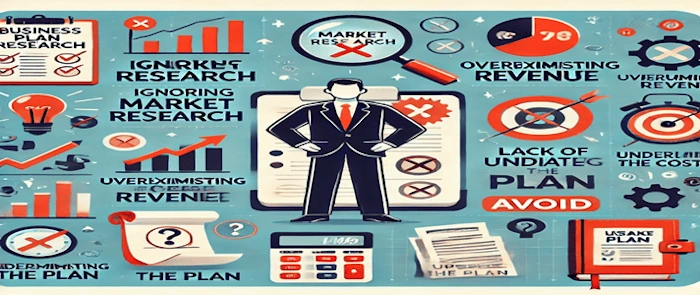Top Tips for Creating an Effective Retirement Business Plan

A retirement business plan is essential for starting and growing a retirement business. Knowing how to write a business plan is a foundational step for any business, as it provides structured guidance and clarifies your strategy. It details your goals, strategies, market analysis, and financial projections. This article explains why you need a business plan, how to choose the right format, and what components to include. By the end, you’ll have actionable tips to create an effective business plan.
Key Takeaways
Business plans are essential strategic documents that outline a company’s goals, market analysis, financial projections, and organizational structure, serving as critical tools for attracting investors and guiding business growth.
Choosing the appropriate format for a retirement business plan—traditional or lean—depends on specific business needs, with traditional plans being more suitable for securing significant investments and lean plans beneficial for agile startups.
Key components of an effective business plan include an executive summary, company description, market analysis, products and services, marketing strategy, financial projections, and a funding request, each playing a vital role in conveying the business’s potential.
Understanding Business Plans
Business plans are the cornerstone of any successful retirement enterprise. They serve as the strategic documents outlining business goals, strategies, market analysis, financial projections, and organizational structure. These documents are fundamental in outlining a company’s structure, strategies, and objectives.
Creating a business plan encourages entrepreneurs to conduct thorough market research and competitive analysis. This not only validates the business idea but also provides a roadmap for managing and growing the business effectively. For investors, a well-crafted business plan demonstrates the viability of the retirement business idea and can be a decisive factor in securing funding from venture capital firms.
Business plans are crucial for attracting partners and stakeholders, who use these documents to assess potential returns on investment. In summary, a business model is more than just a document; it is a strategic tool that can help your business thrive and grow.
Choosing the Right Business Plan Format
Choosing an appropriate format for your business plan sets the tone for how your retirement business will be perceived. Business plans are generally classified into two main categories. The two main categories are traditional business plans and lean startup plans. Traditional business plans are very detailed and require substantial time and effort to create, but they are more persuasive to potential investors.
Traditional business plans typically include multiple comprehensive sections that cover all relevant aspects of the business. On the other hand, lean startup plans provide a quick overview of the business, focusing on key sections such as value propositions and customer segments. These are particularly useful for startups that need to pivot quickly and efficiently.
The choice between a traditional and a lean business plan depends on your specific business needs and whether you are seeking outside funding. A traditional business plan might be more suitable for securing significant investment, whereas a lean startup plan benefits early-stage businesses needing to iterate quickly.
Essential Components of a Business Plan
A comprehensive retirement business plan typically includes several key components: the executive summary, company description, market analysis, products and services, marketing strategy, and financial projections. Each of these sections plays a vital role in providing a holistic view of the business and its potential for success.
Without a clear purpose, you may waste effort on irrelevant sections. Understanding what each component should contain and its role in the overall business plan is vital.
Executive Summary
The executive summary is a critical part of a business plan. This section summarizes vital information about the business and other parts of the plan. Reviewers often have limited time, so this section should provide a high-level overview that captures their interest.
The executive summary should include the company’s mission statement, value proposition, and long-term goals. It should also effectively highlight what the business does, why it will succeed, and where it will be in five years. Writing this section last ensures that it encapsulates the essence of the entire business plan.
Company Description
The company description answers fundamental questions like ‘Who are you?’ and ‘What do you plan to do?’. It provides an introduction to the business, highlighting its strengths, differentiators, and investment appeal.
Include a mission statement explaining why the business exists, keeping it to a single sentence. Additionally, the company goals and objectives should be defined using the SMART criteria: specific, measurable, achievable, realistic, and time-bound. This section also includes the legal structure and hiring plans of the organization.
Market Analysis
Market analysis helps understand industry trends, customer demographics, and preferences, ensuring businesses are well-prepared. Defining a specific target market helps avoid misleading investors about business potential and ensures a focused marketing strategy.
Competitive analysis should cover key competitors’ details, differentiation strategies, and an understanding of the industry landscape to validate the business position. Evaluating market size involves estimating potential demand and understanding local conditions, aiding in strategic planning.
Products and Services
A strong value proposition highlights the distinct competitive advantage the company offers, showcasing the unique value that sets it apart in the market. The product/service line description includes details about the products/services, customer benefits, and plans for intellectual property.
Ongoing research and development should be incorporated to demonstrate potential for additional revenue streams. This section should also clarify the production process, including sourcing methods and the product life cycle.
Marketing Strategy
A marketing strategy outlines how the business plans to promote its offerings and the budget needed for these marketing initiatives. Promotion methods may include:
Paid online search advertising
Social media promotions
Traditional direct mail
And more
The marketing and sales section should address the target market and customer segments crucial for your product or service. It should also describe how you plan to attract and retain customers and how sales will occur.
Financial Projections
Include anticipated income, expenses, and cash flow in financial projections to demonstrate the business’s financial outlook for the first five years. Overlooking financial details and projections can render the business plan incomplete and unconvincing.
Include income statements, balance sheets, and cash flow statements as the main financial documents. For existing business, historical financial data should also be included. These projections help demonstrate a realistic repayment plan to potential lenders or investors.
Creating a Funding Request
The funding request is crucial, especially when seeking investment for your business. Venture capital firms often require a detailed business plan to assess the feasibility and profitability of a retirement business. It should justify the specific amount of financing needed, based on thorough research and projected costs. Clearly explaining the purpose of the money and its impact on business growth is essential.
A comprehensive funding request includes details like funding requirements, purpose of funds, funding type (debt or equity), terms, duration, and detailed fund usage. Specific details regarding fund usage should include buying equipment, paying salaries, or covering specific bills.
Noting personal contributions in the funding request shows commitment to the business. Consider different financing options, including debt or equity financing, or a combination of both.
Tips for Writing an Effective Business Plan
Writing an effective business plan is both an art and a science. Knowing how to write a business plan efficiently is crucial; using templates and outlining essential components can streamline the process. The final version should be neat, professional, and proofread. Enhance readability by making the business plan visually appealing and clear.
Including a table of contents with key sections and page numbers is essential for navigation. To succeed, it’s crucial to write a business plan that effectively communicates your vision.
Conciseness is crucial; avoid excessive length and focus on clarity. Having a single author or thorough editing helps maintain a uniform tone and style throughout the business plan. Emphasizing what makes the retirement business unique is vital for attracting investors.
Know Your Audience
Tailoring the business plan to the audience ensures inclusion of relevant information. Identifying the audience helps to adjust the tone and content, ensuring the business plan resonates with its readers.
Keep It Concise
The business plan should ideally range from 15 to 20 pages for effectiveness. Writing a business plan that is excessively lengthy can deter readers from engaging with it.
Using clear and simple language enhances the readability and effectiveness.
Consistent Tone and Style
A consistent tone and style are essential for professionalism and readability in a business plan. A consistent tone and style enhance the clarity and effectiveness of communication in business documents.
Either have a single person write the business plan or ensure proper editing before distribution.
Common Mistakes to Avoid
Common mistakes in business plans can undermine the potential success of a business. Errors can waste time and effort, deterring future opportunities.
When presenting financial figures, ensure they are accurate to gain the trust of investors and stakeholders. Including key financial figures, such as profitability margins and debt levels, presents a clear economic picture.
Startups greatly benefit from business plans as they help prevent missed opportunities and guide strategic decisions.
Using Business Plan Templates and Software
Business plan templates and software can significantly streamline the planning process. A free business plan template provides structure and guidance, reducing workload and offering a headstart on content. Business plan software aids in planning, drafting, creating graphics, syncing financial data, and more. Customizable templates allow users to tailor their plans to specific industries. These tools can help streamline the overall business planning process.
Utilizing business plan software can significantly reduce the time required to create a plan. They also offer features to generate financial statements automatically, making it easier to prepare detailed projections.
Summary
In summary, a well-crafted business plan is a critical tool for any business. It serves as a roadmap, guiding your business journey from inception to success. By choosing the right format, including essential components, and avoiding common mistakes, you can create a business plan that attracts investors and drives growth.
Remember, the journey of creating a business plan is a continuous process. Regularly update your plan to reflect changes in the market and your business. With the right tools and strategies, you can turn your business idea into a thriving reality.
Frequently Asked Questions
What is the most important section of a business plan?
The executive summary is the most important section of a business plan because it offers a concise overview for reviewers who may have limited time. It is crucial to capture their attention with a compelling summary.
How often should I update my business plan?
It is essential to update your business plan regularly, particularly in response to market dynamics, which could require quarterly or annual reviews based on your industry. This ensures your plan remains relevant and aligned with your business goals.
What is the ideal length for a business plan?
The ideal length for a business plan is typically between 15 to 20 pages to ensure clarity and effectiveness. This range allows for comprehensive details without overwhelming the reader.
Can I use templates and software to create my business plan?
Yes, utilizing templates and business plan software is an effective way to streamline the planning process and save time. They can provide structure and guidance to help you develop a comprehensive plan.
Why are financial projections important in a business plan?
Financial projections are crucial in a business plan as they illustrate the company’s financial outlook, aiding in attracting investors and securing funding. This clear financial foresight is essential for a business’s growth and sustainability.
Disclosure: Some of the links in this article may be affiliate links, which can provide compensation to us at no cost to you if you decide to purchase. This site is not intended to provide financial advice. You can read our affiliate disclosure in our privacy policy.







